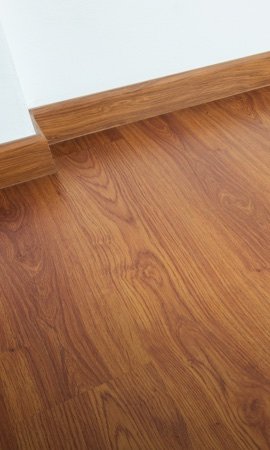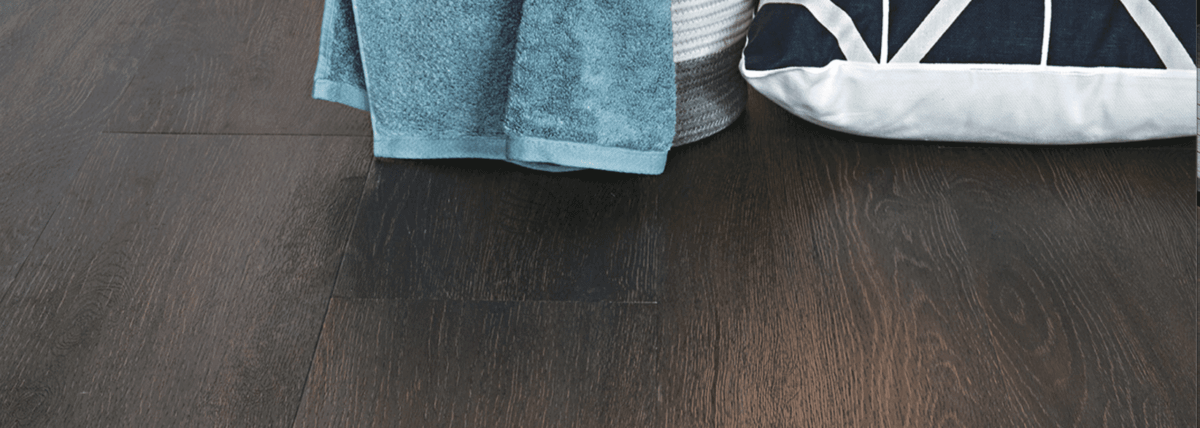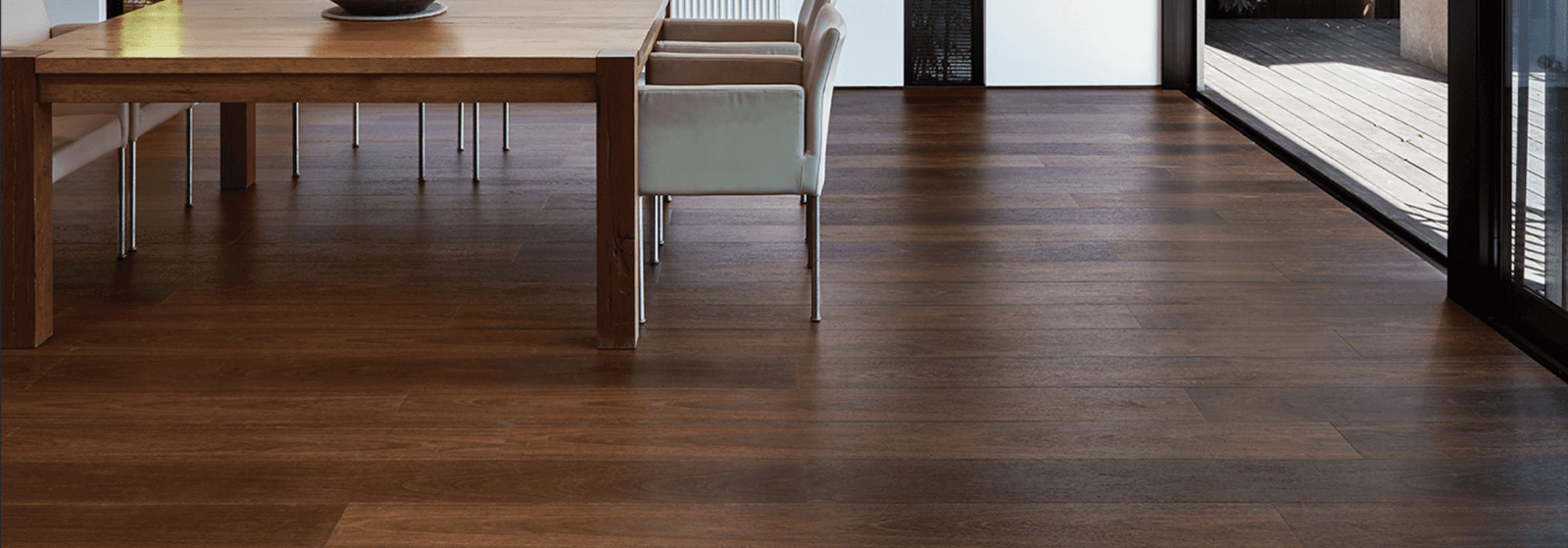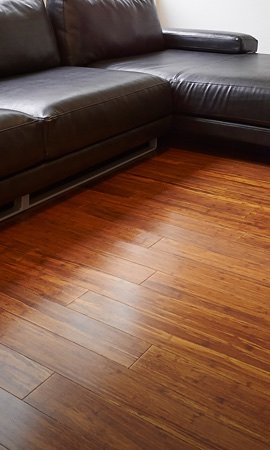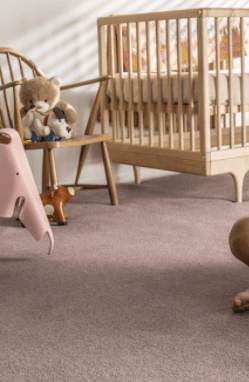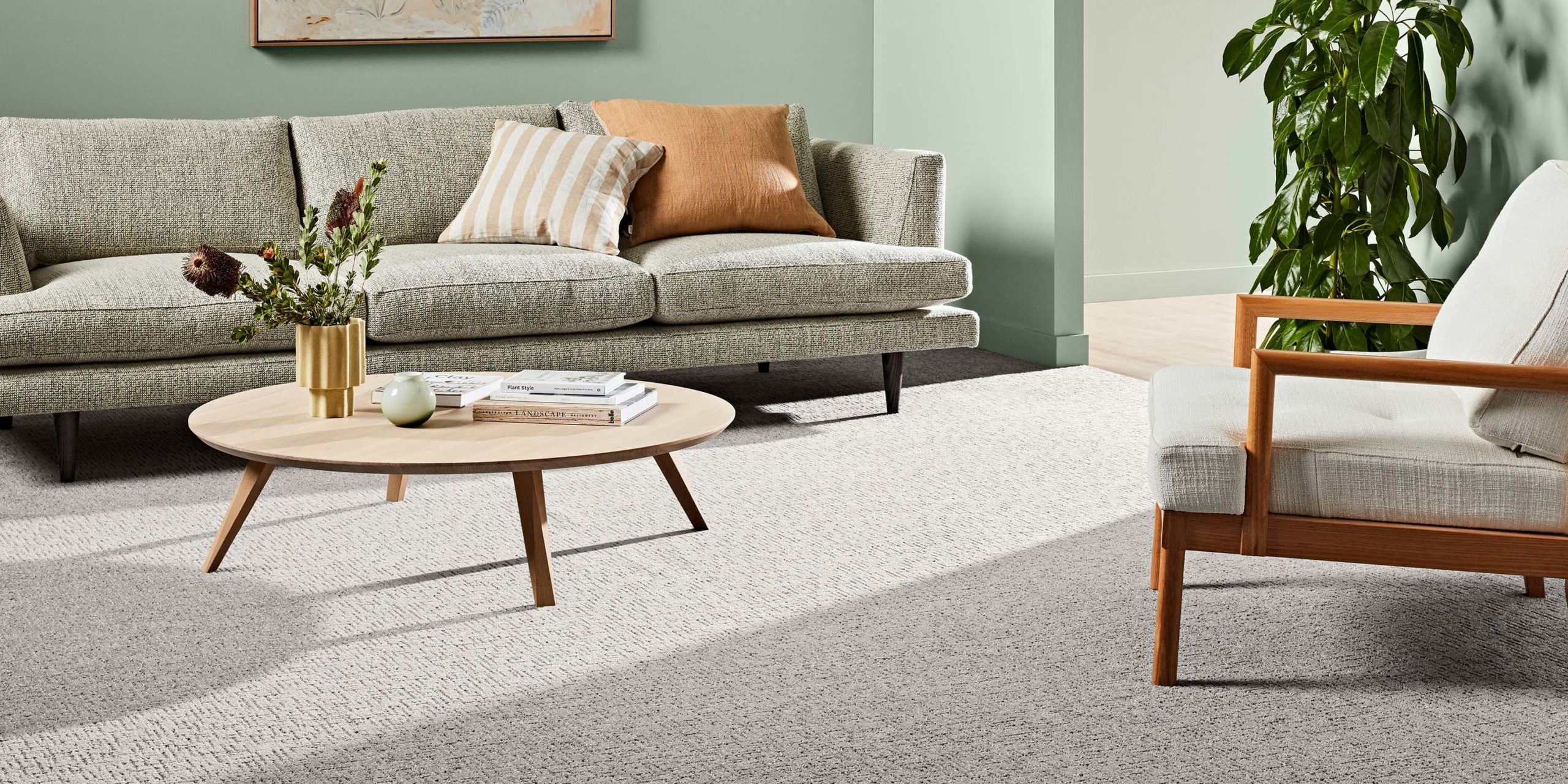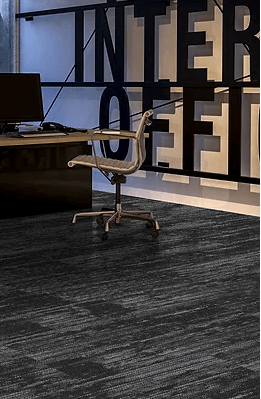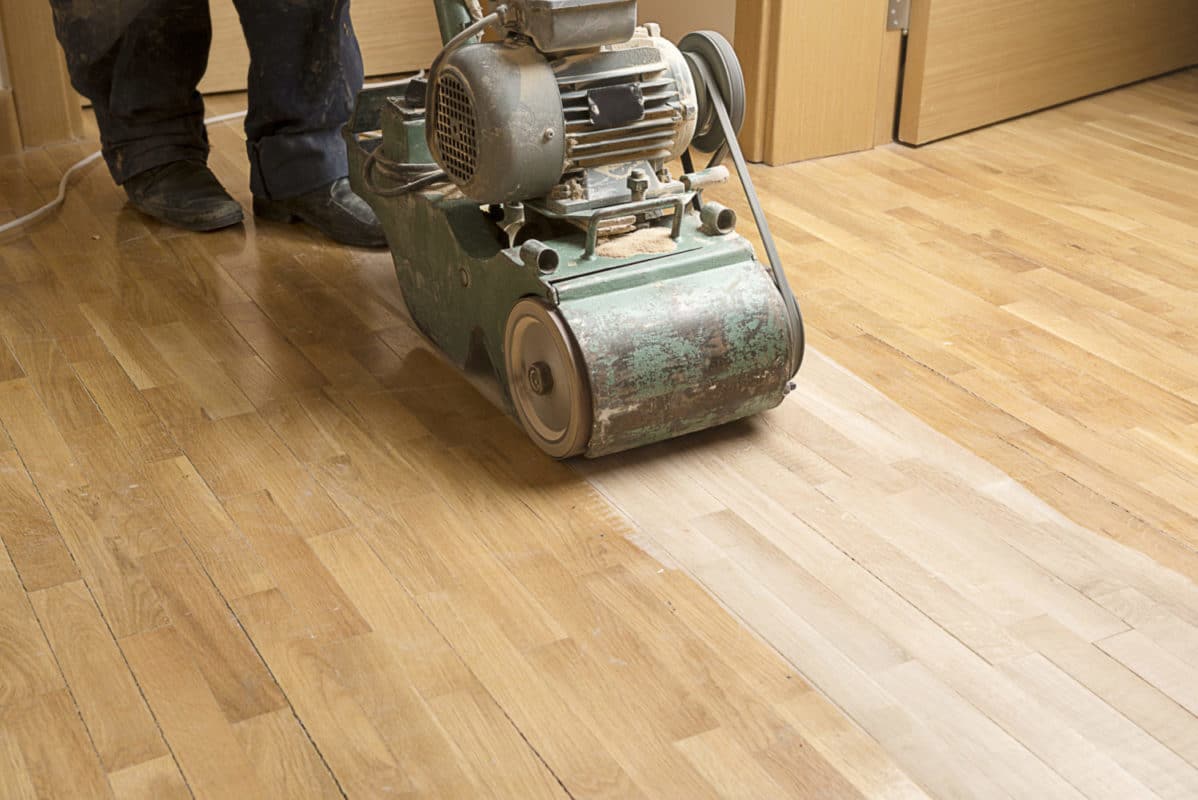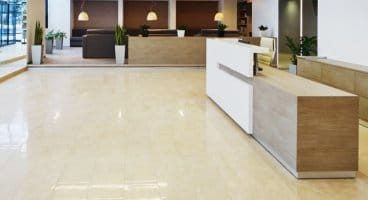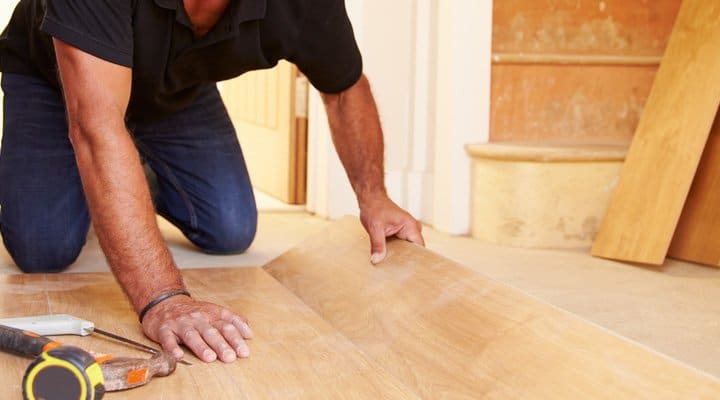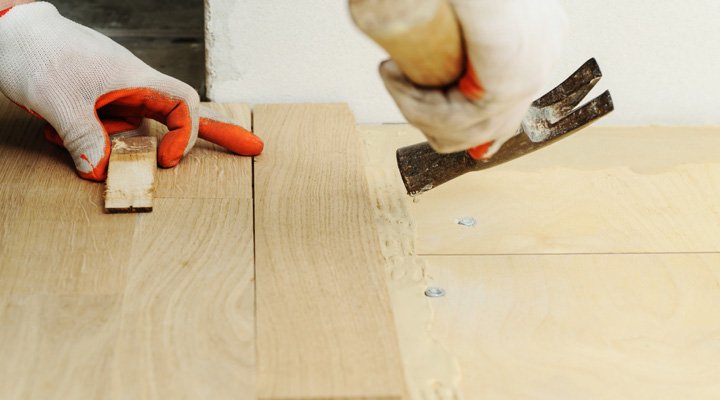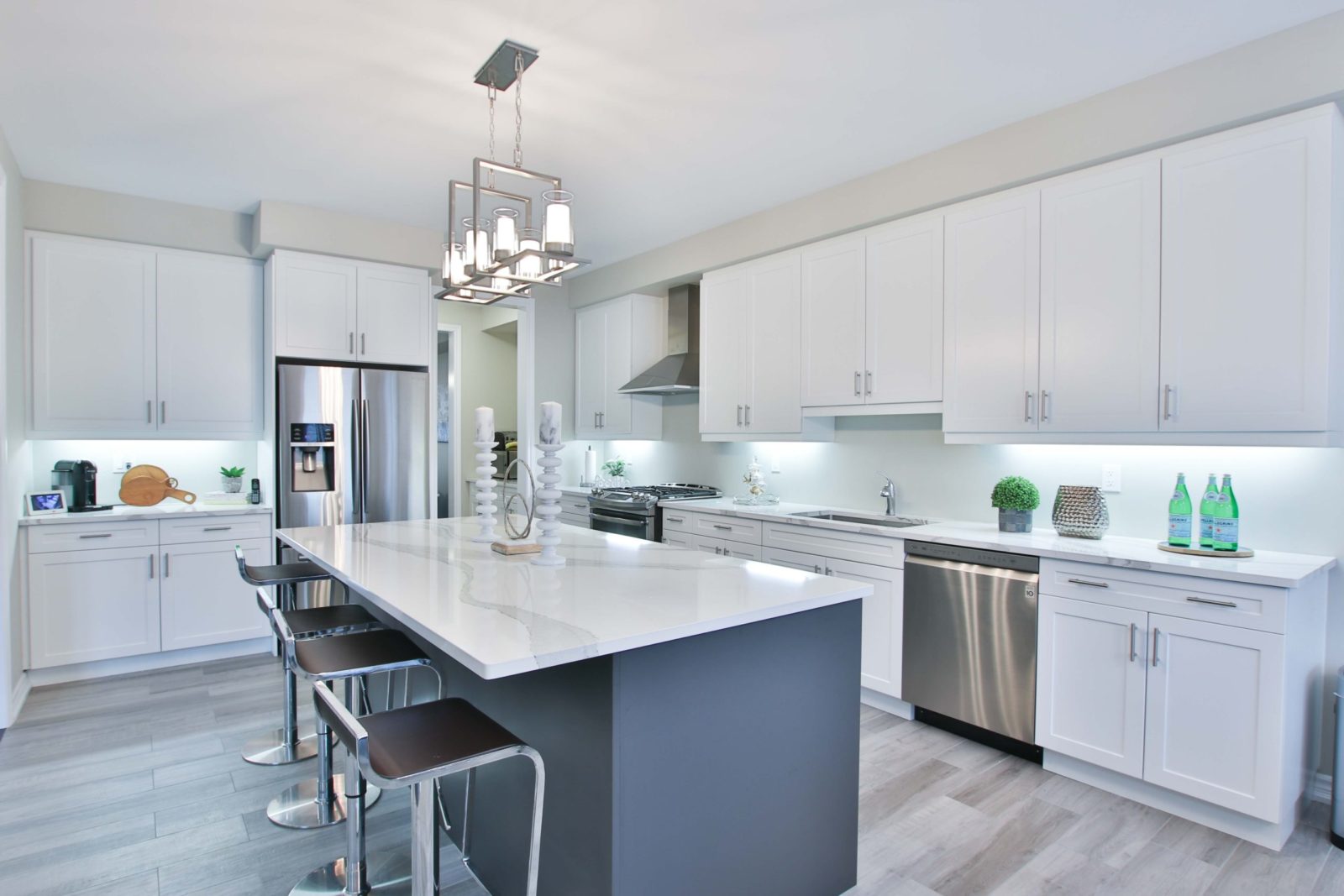

20 Nov The Best Kitchen Flooring Options [2023 Guide]
When designing a kitchen, most people immediately start thinking of ovens, stoves, and bench space. However, it’s just as important to point your eyes downwards and take a good hard look at the flooring beneath your feet. Kitchen flooring is a crucial piece of the puzzle – getting it right can save you an enormous amount of pain in the long term.
What makes kitchen flooring different to other floors in your home? Well, a kitchen floor is arguably the most used and abused in the home, standing up to constant wear, water spills, impacts and fluctuating temperatures. (This makes flooring types like laminate flooring generally unsuitable for the kitchen, due to limited water resistance.) Not only do kitchen floors live a difficult life, but choosing one is also difficult because of its unique proximity to where we prepare food.
Having proper flooring in the kitchen is not only critical for your safety and comfort, but increases the longevity of your kitchen as you can clean up much more easily. A kitchen floor must be hygienic, durable, easily maintained, and stain and moisture-resistant, to name a few – that’s a lot of factors to take into account!
Given kitchens are a central gathering place in our homes alongside the dining room, we need a kitchen floor that incorporates a great design – looks great and feels great! In the 2020s, we’ve seen warm tones and natural timber-styles surge in popularity, due to their versatility in being able to achieve a wide range of looks, whether rustic or modern.
As we use our kitchens regularly, it’s important to have a high-quality floor that can stand up to everyday abuse. In this article, we’ve done the research for you – we’ll first take a look at some great options for your next kitchen floor before answering a few common questions that we hear from people like you.


Kitchen Flooring Options:
Timber (Wood) Flooring for Kitchens:
An ever-popular choice, timber floors incorporate the natural warmth and character of wood in a luxurious package. Despite popular belief, timber floors are perfectly suitable for kitchens as long as they’ve been treated and looked after well to increase their resistance to spills and stains.
When you’re looking for a natural timber floor, you have two main options: Solid timber flooring (or solid wood flooring) and engineered timber flooring. The main difference is their composition – solid timber is completely made from real wood, while engineered timber is multilayered and uses a thin slice of real wood that’s bonded to a sturdy plywood core. In effect, engineered timber is more affordable and stable (i.e. it won’t expand or contract as much), but doesn’t last for generations like solid timber. Want to learn more about the difference? Check out our comprehensive article here for the details!
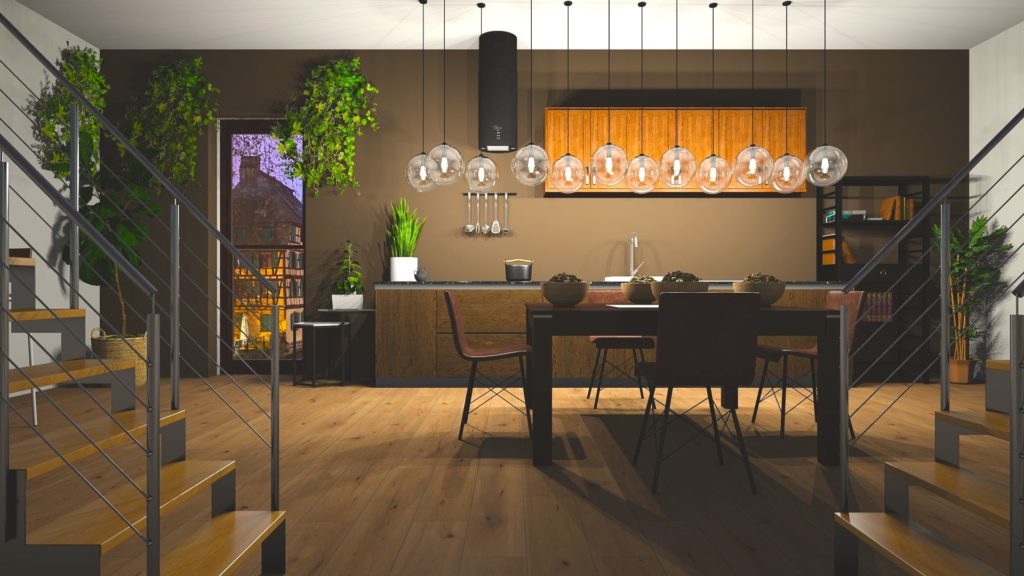

Benefits of Timber (Wood) Flooring in the Kitchen
If the classic visual aesthetic and great texture of timber flooring aren’t enough for you, timber floors are easy to clean and resilient to scratches – they use a hard protective finish that absorbs all of the wear and tear thrown at them.
Timber is a brilliant choice for your kitchen floors if comfort is important to you. It feels solid underfoot, provides a stable surface, and is generally pleasant to walk or stand on. It also radiates natural warmth, helping to keep your kitchen comfortable all year round.
Timber floors are designed to last. With all of the action an average kitchen sees on a daily basis, a kitchen floor that withstands whatever you throw at it is crucial. Timber floors not only age gracefully, but they can also be resanded and refinished to rejuvenate their appearance. A good polish and sand can trick anyone into believing your timber kitchen flooring has just been installed. Similarly, you can coat your timber kitchen flooring with a finish like polyurethane to make it even more resistant to the typical wear and tear you expect to see. As such, timber floors can add real value to your home if you decide to sell!
Engineered timber floors in particular have a few more benefits up their belt. For one, they can also be installed as a floating floor (i.e. over your existing floor), which is an affordable and efficient way to get a great floor in your kitchen. Engineered timber floors can also be more water-resistant due to their stable, multi-layered core. In fact, some engineered timber floors such as Everfloor’s HydroPro timber flooring range are 100% waterproof!
Drawbacks of Timber (Wood) Flooring in the Kitchen
However, timber flooring does come with its drawbacks; in particular, they’re not as resistant to drops and impacts, unlike tile and hybrid floors. (This also means that they’re more forgiving to whatever’s been dropped!)
As timber is a natural material, it tends to expand and contract over time, but the gaps between floorboards that accommodate for this can accumulate food and debris that is difficult to clean out. (This is less of a problem for engineered timber floors, though, as we discussed above.)
Solid timber floors also have a higher initial purchase and installation cost and require regular maintenance to keep them in good condition, although their unrivalled longevity means that it can be cheaper in the long run.
Nevertheless, timber floors are a solid choice for your kitchen when you’re looking for a robust and resilient option that will last for decades.
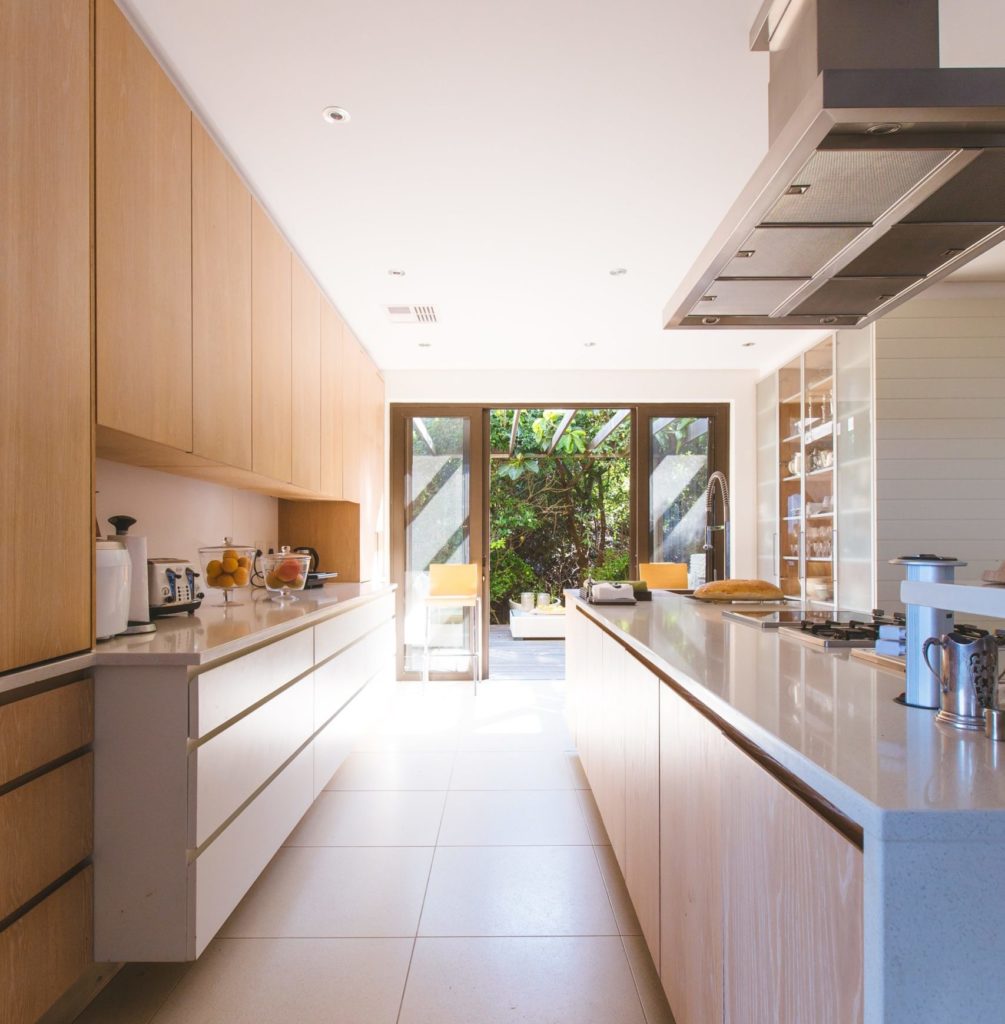

Vinyl Kitchen Flooring
Perhaps the most budget-friendly option, vinyl floors are a hard-wearing, hygienic and waterproof option for your kitchen. You can get them in vinyl planks, roll-out (sheet) or tile (also known as luxury vinyl tile, or LVT) form, all three of which are simple to lay.
At FloorVenue, much of our vinyl plank floors have been replaced by hybrid floors. Although they have similar characteristics, hybrid floors are more durable and feel more solid underfoot.
Benefits of Vinyl Flooring in the Kitchen
As mentioned above, vinyl floors not only have low purchase costs, but are also cheap to install – in fact, installing one could even be a great DIY project for the budding handyperson!
One of the greatest assets of vinyl floors is that they are completely waterproof, especially in sheet form. Unlike timber, vinyl floors don’t have any moisture-absorbing pores or fibres so they can deal with moisture easily and are ideal kitchen floors in this area.
Vinyl floors are durable. Like laminate floors, vinyl floors utilise a hard-wearing top coat that utilises substances like aluminium oxide, so you won’t have to worry about dropped cutlery destroying your perfect kitchen floor. A vinyl floor is perfectly capable of rolling with the punches while still looking its best.
This durable nature, combined with being waterproof, makes for a kitchen floor that is extremely simple to clean. Your kitchen flooring is going to see all manner of mess over the years that you use it, but with a vinyl floor there’s nothing that a simple sweep, vacuum, and mop can’t fix.
And if you’re looking for great looks, vinyl floors have that covered – since designs are essentially printed onto the vinyl, there’s a humongous range of styles you can choose from! Unlike vinyl from the olden days, modern vinyl can look just like the real thing, too – even mimicking the textures of surfaces like wood or tile at an affordable price.
Drawbacks of Vinyl Flooring in the Kitchen
The main drawback to vinyl floors is their soft and smooth surface which, although comfortable, makes them susceptible to ripping and tearing, as well as denting by heavy objects. If you’d like your floors to have better protection against drops, we’d recommend going for hybrid or even tile flooring.
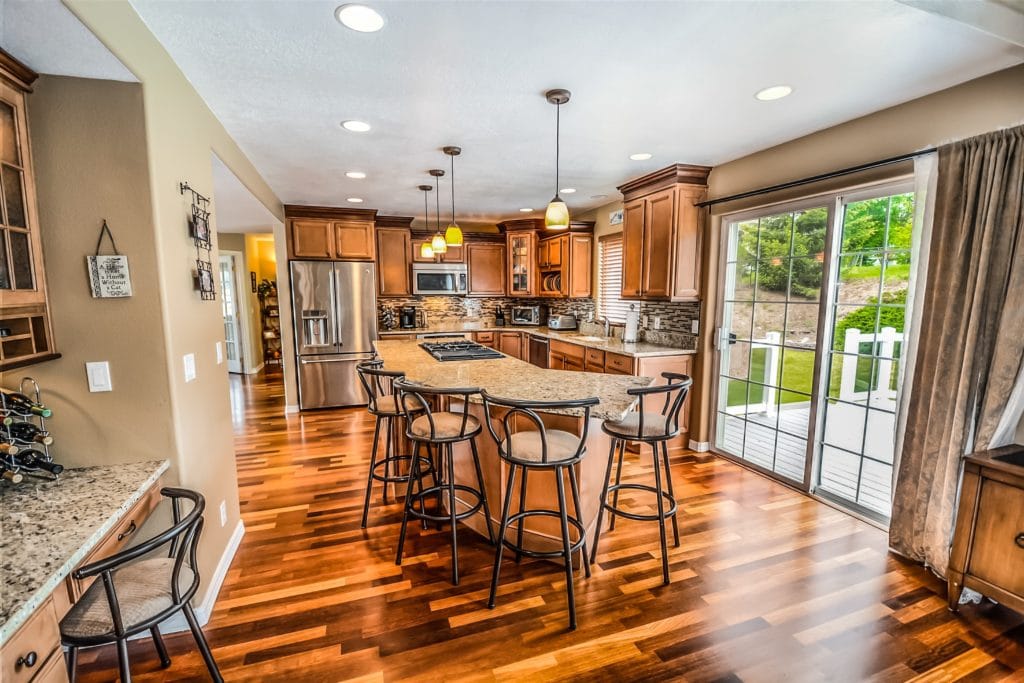

Hybrid Kitchen Flooring
Hybrid kitchen flooring takes it a step further by combining the water-resistance and hygienic nature of vinyl with the durability of laminate, creating a floor that has the perfect characteristics for the kitchen. Like vinyl floors, they’re made up of a vinyl print pattern that’s been coated with an extraordinarily tough protective coating, but differ in their use of a core that’s been infused with sandstone or recycled wood to give added strength.
Benefits of Hybrid Flooring in the Kitchen
Although hybrid floors are a little more expensive than vinyl, they’re still an excellent option for the budget-conscious. This is particularly true because of the low installation costs associated with hybrid’s floating floor design, which is where hybrid planks just snap together using their click-lock joints over your existing floor.
Like vinyl, the use of a synthetic print layer opens up the possibilities for design, with hundreds of possible styles available at your disposal. Advancements in digital imaging technology have made hybrid floors virtually indistinguishable in look and feel to flooring surfaces like timber and tile.
Just like a vinyl kitchen floor, hybrid floors are waterproof and consequently easy to clean, so it’s a cinch to clean up any food or liquid spills. A damp mop is all you need to keep your hybrid floors in tip-top condition, and there aren’t any gaps for grime to accumulate either!
Hybrid floors can also be installed with an underlayment, which is a soft foam padding placed underneath the floor. This helps reduce noise-transmission (particularly important if you’re living in an apartment or upstairs), acts as an insulator, and provides a little springiness and ‘give’ to your floor, helping maximise comfort during those long cooking sessions!
Throw in the fact that hybrid floors use hard-wearing top coats and are extremely durable in high-traffic areas, and you’ve got yourself a ready-made floor option for your kitchen.
Drawbacks of Hybrid Flooring in the Kitchen
Cheaper hybrid floors are more susceptible to staining, warping or peeling, so make sure you take a look at the real thing before getting your floor.
Unlike timber floors, hybrid floors also can’t be refinished, so they only last as long as the pre-applied protective layer. However, if any individual floorboards get damaged, you can always swap them out individually, although the new floorboard will obviously differ in exposure to wear.
Hybrid floors can also discolour on contact with harsh sunlight or some rubbers (like some found in slippers and mat backings), although this is generally true of all flooring products.
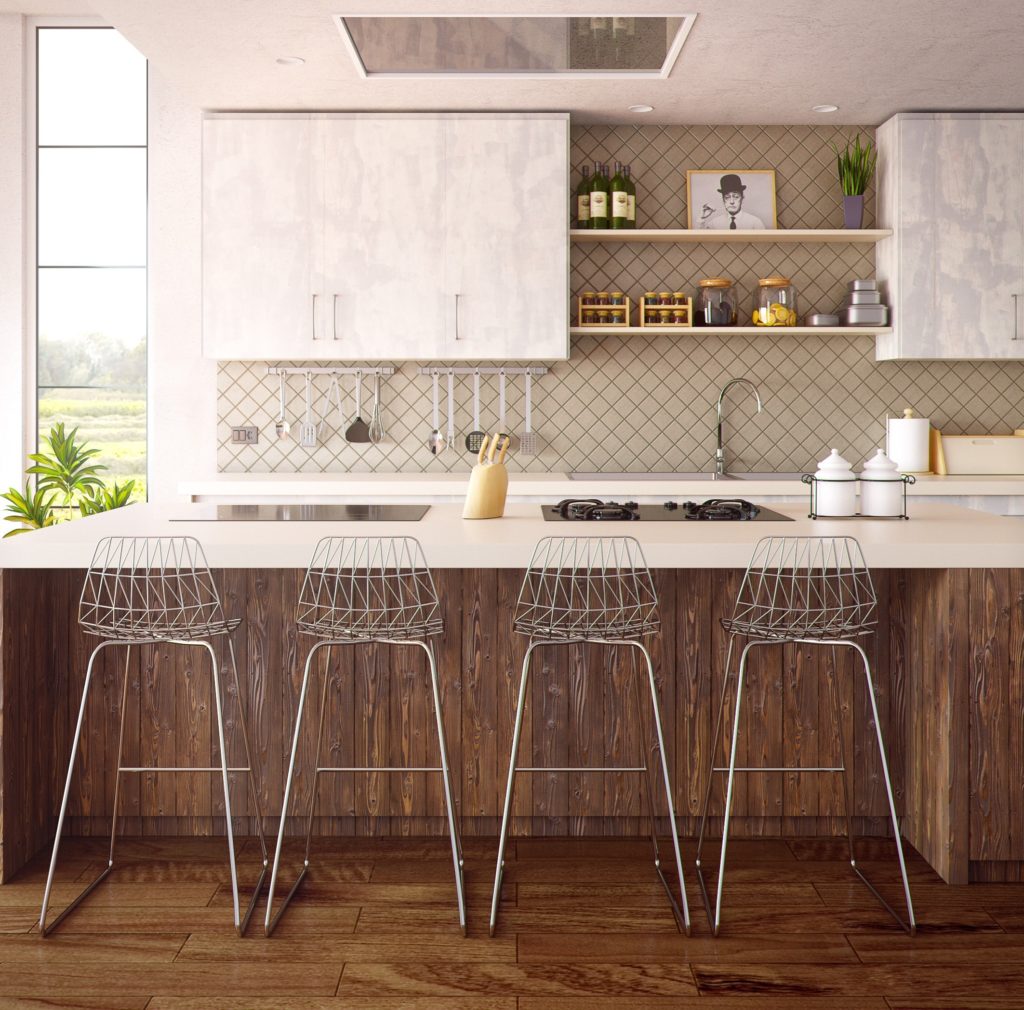

Stone and Tile Kitchen Flooring:
If you think of a kitchen floor, chances are that you think of one that’s made of stone or tile – with good reason! These are the quintessential kitchen floors, incorporating a timeless design with a hard, durable, stain-resistant and an almost maintenance-free surface.
Benefits of Stone and Tile Flooring in the Kitchen
Stone and tile floors are extremely hard and durable, so they’ll hold up against scratches or impacts and last for decades. (The objects you drop, though, might not be so lucky!)
These floors are also completely waterproof, so you don’t have to worry too much about spills and stains, and cleaning is trivial too. As long as you clean your floor regularly, it’ll look nearly brand new for its entire life!
Although they don’t quite have the same range as hybrid or vinyl floors, stone and tile flooring comes in a wide variety of designs, so you have enormous flexibility in choosing one that’s great for you. Like timber, stone and tile floors can also have natural character and surface variations, which can really add depth to your kitchen. In fact, you can even get tile floors that have the same look and texture as timber – simply incredible!
Drawbacks of Stone and Tile Flooring in the Kitchen
Stone and tile are costly to buy and have installed, particularly since their use of grout generally necessitates professional installation. Given their longevity, however, this may be a good trade-off if you’re looking for a floor that lasts for ages. (Beyond regular cleaning, the only maintenance that you’ll need to do is to seal the grout to prevent staining.)
Additionally, stone and tile floors can be heavy, which also has the side effect of transferring any vibrations through the floor. This makes them relatively unsuitable for apartments or second-storey floors, as the floor structure (and your neighbours!) might not be able to support the added weight and sound of these floors.
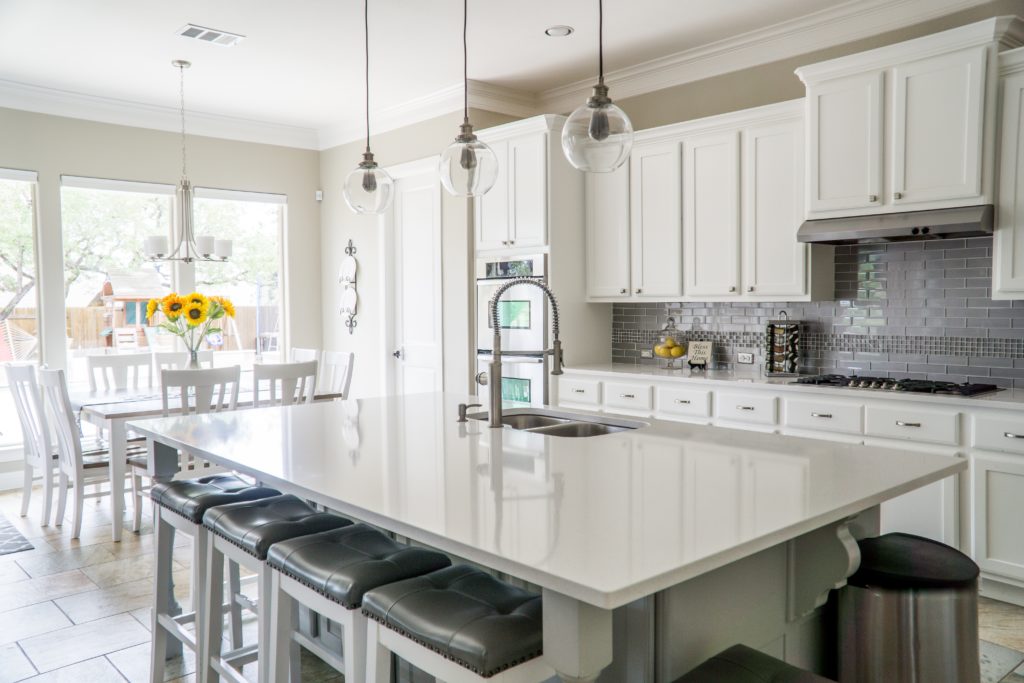

What is the best flooring for a kitchen?
Unfortunately, there isn’t really a clear answer, as your ‘best’ floor will not necessarily be the ‘best’ for others. When choosing your next kitchen floor, think about the features you need the most, whether they be added comfort, spill-resistance, or durability. If you’re aiming for a particular look, you might even find that the choice has already been made for you.
While there are many flooring types that can be used for a kitchen, our top recommendation for kitchen flooring comes down to floor tiles, hybrid & vinyl flooring, solid timber flooring and engineered timber flooring. Highly water-resistant laminate flooring and more exotic options like concrete, rubber and cork floors are also great, although they can have more limited designs and are harder to find.
If you need help choosing a floor, fill out our contact form and we’d love to help you out!
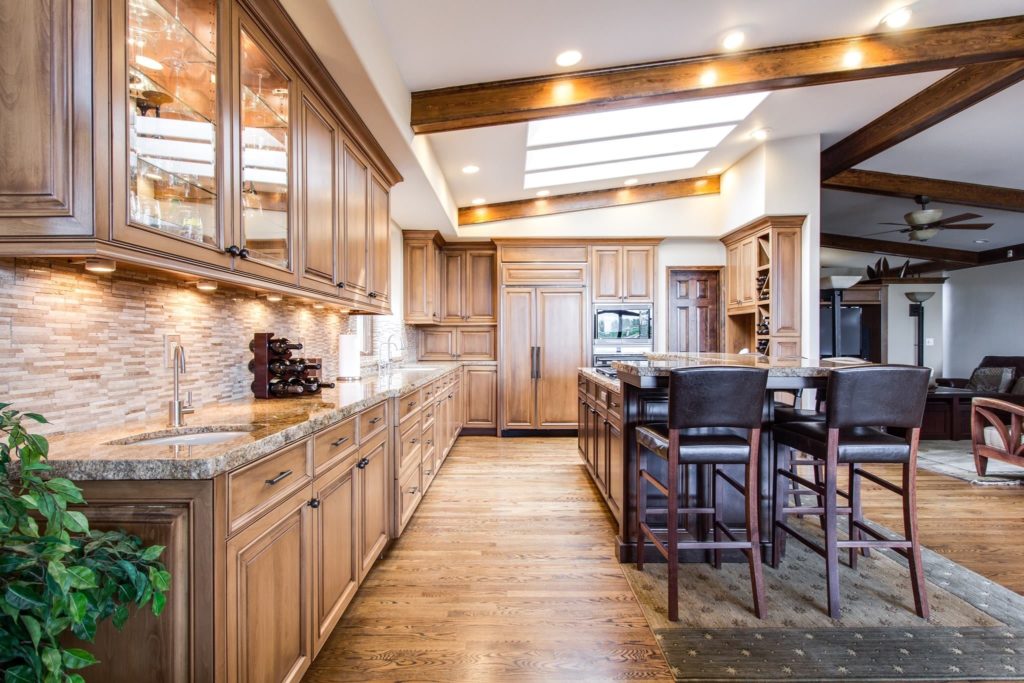

Kitchen Flooring FAQs
Is hybrid flooring good for the kitchen?
Yes! Hybrid kitchen flooring is one of the best choices you can make for your kitchen. The protective topcoat keeps it safe from water and moisture, whilst offering comfort and easy maintenance too. Add in the reduced cost of installation and you’re looking at a perfect choice for kitchen flooring.
Is vinyl flooring good for the kitchen?
Definitely! If you desire a flooring material in your kitchen that is waterproof, easy to maintain, extremely affordable, and looks gorgeous, you can’t go wrong with choosing vinyl.
Is bamboo flooring good for the kitchen?
In the past decade, bamboo flooring has been extremely popular due to its unique visual qualities, affordability, and environmentally friendly nature. However, we wouldn’t recommend bamboo flooring in the kitchen as they don’t play nice with water. Although some bamboo products offer some level of water resistance through wax seal, other flooring types like hybrid and tile will be much more suitable in the long run.
What is the difference between hybrid and vinyl flooring?
Vinyl floors are cheaper to buy and install, but tend to be a little softer and susceptible to dents and rips. Meanwhile, hybrid floors are harder and more premium in price and quality, incorporating either sandstone or recycled timber for added hardness and durability.
What are the different types of kitchen flooring?
Kitchens are one of the harshest environments for a floor, so it’s important to choose a floor that can stand up to impacts and spills whilst still being comfortable and hygienic. Vinyl, tile, and hybrid floors are amongst the most recommended kitchen floors, followed by timber (solid and engineered) and laminate flooring.

